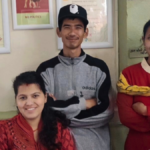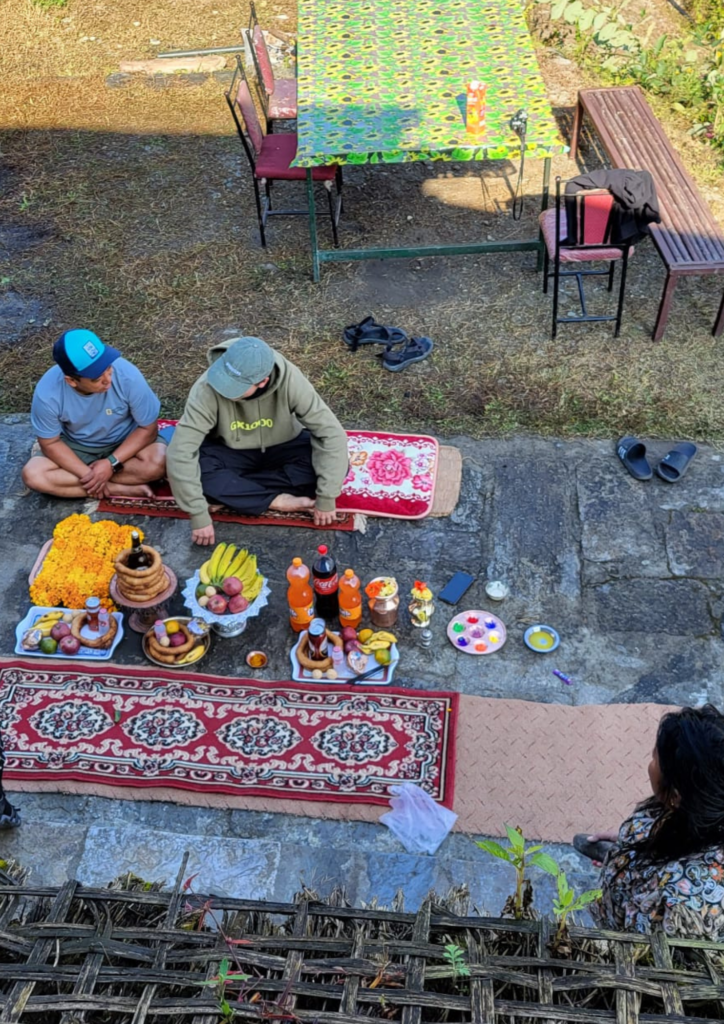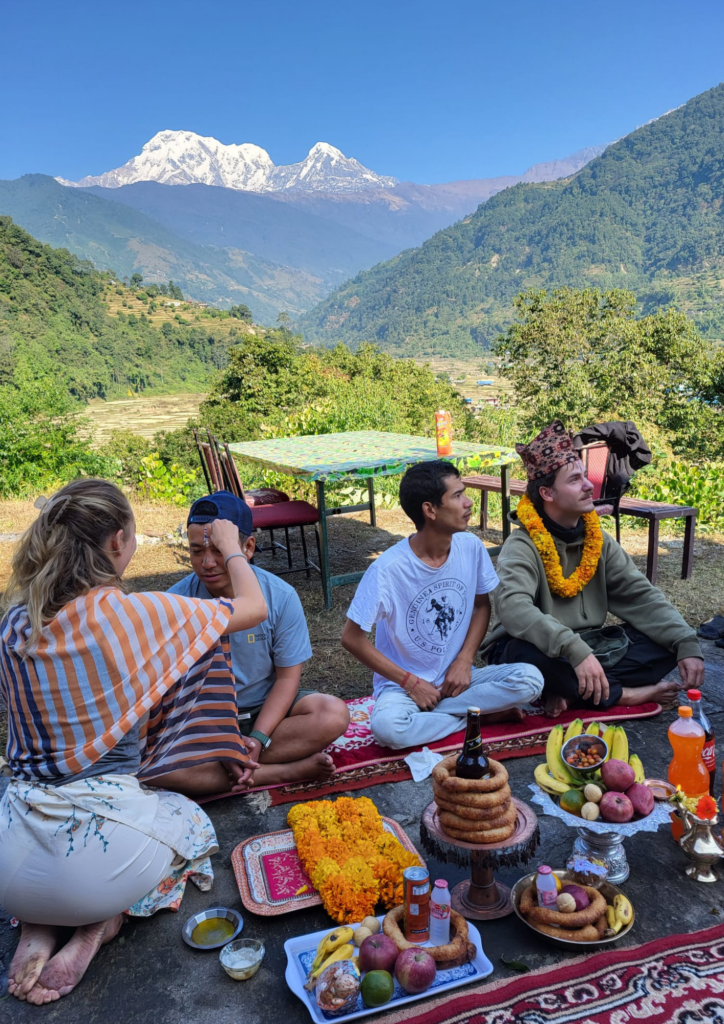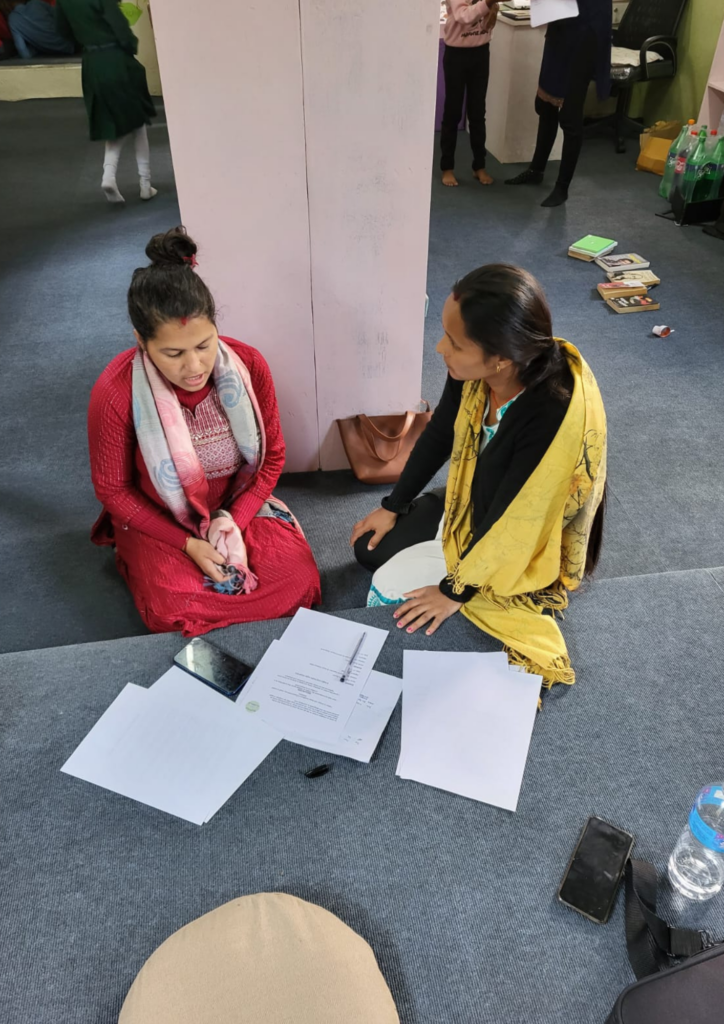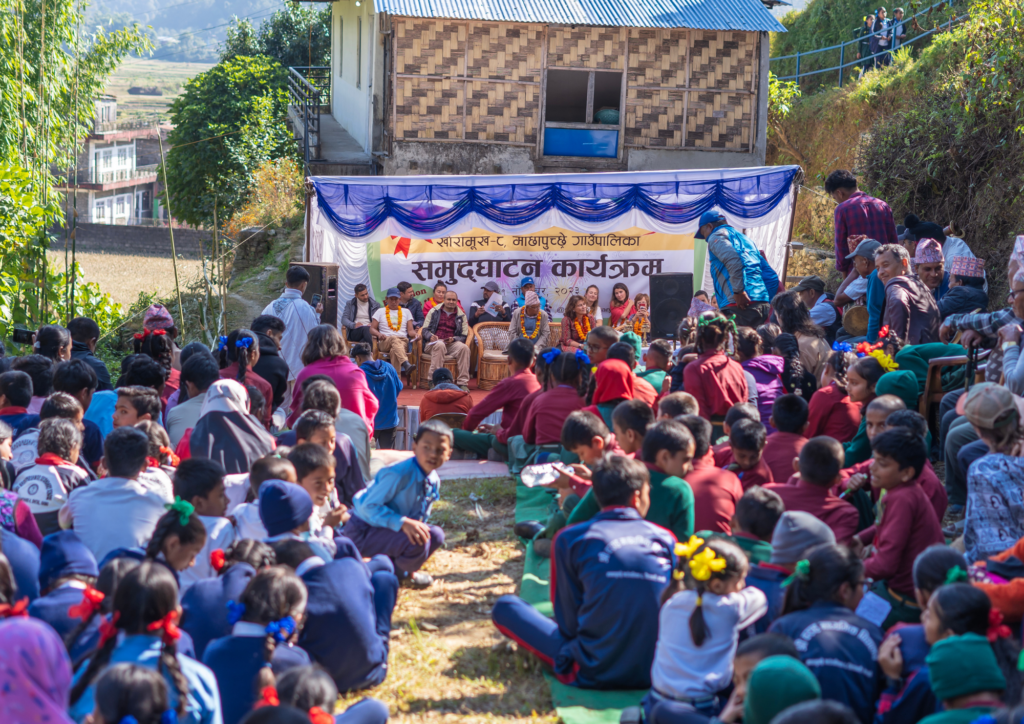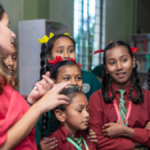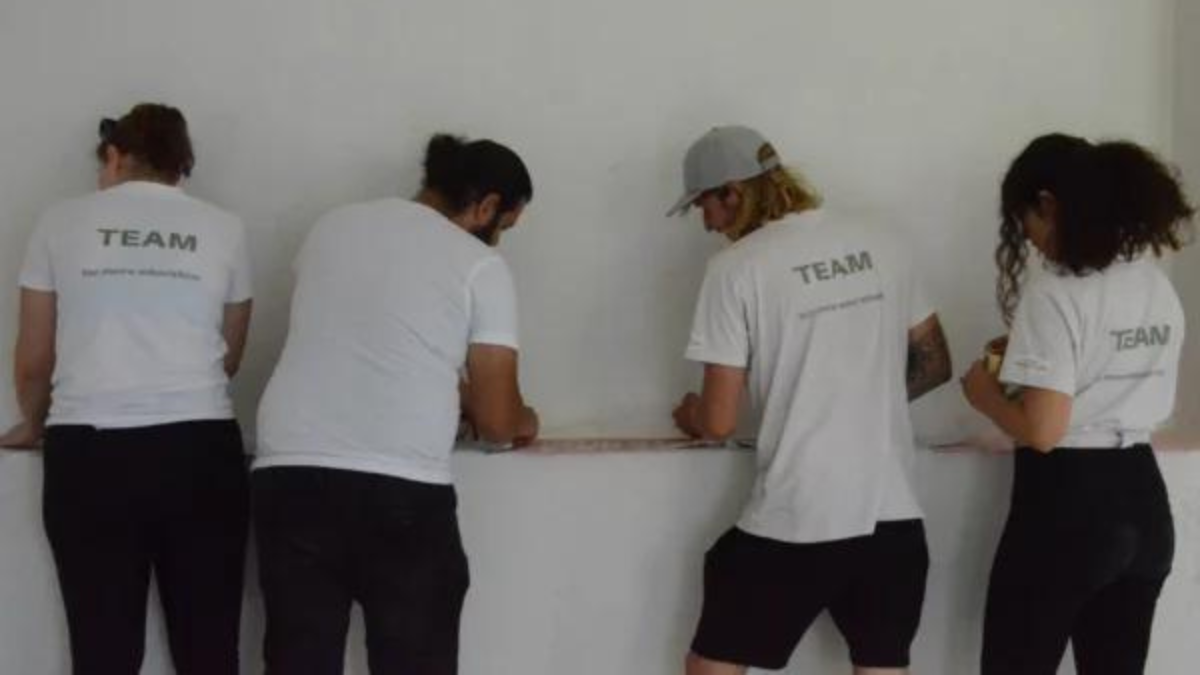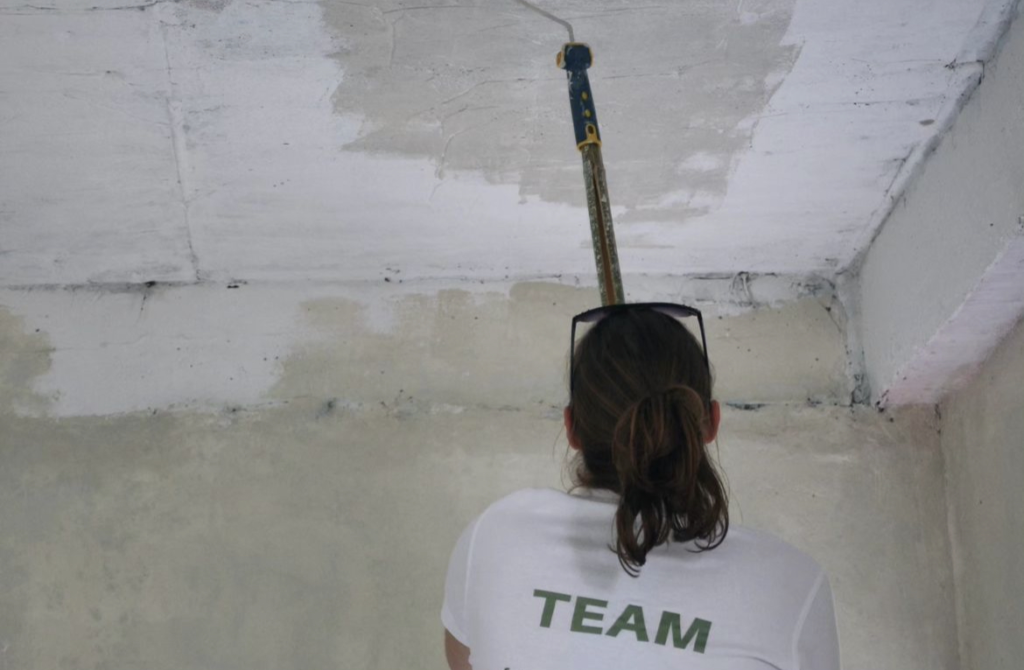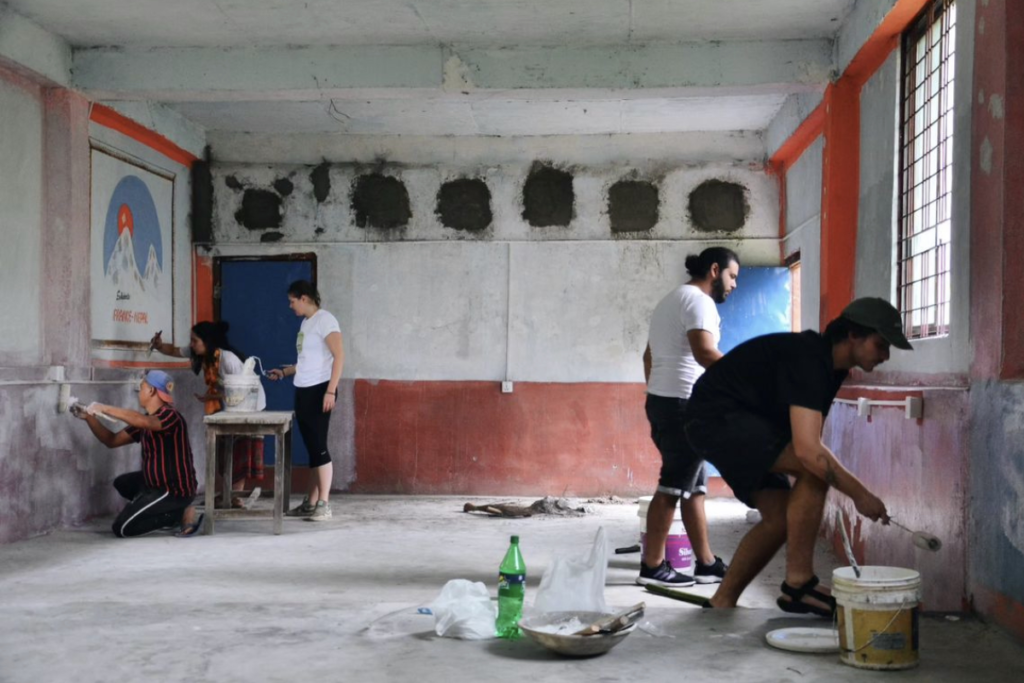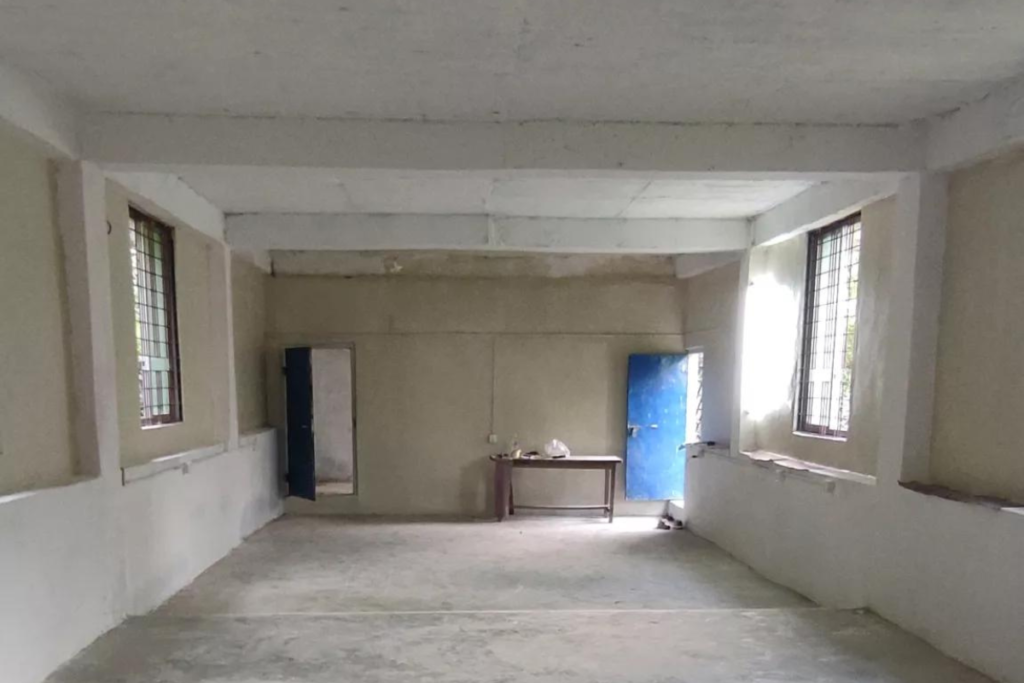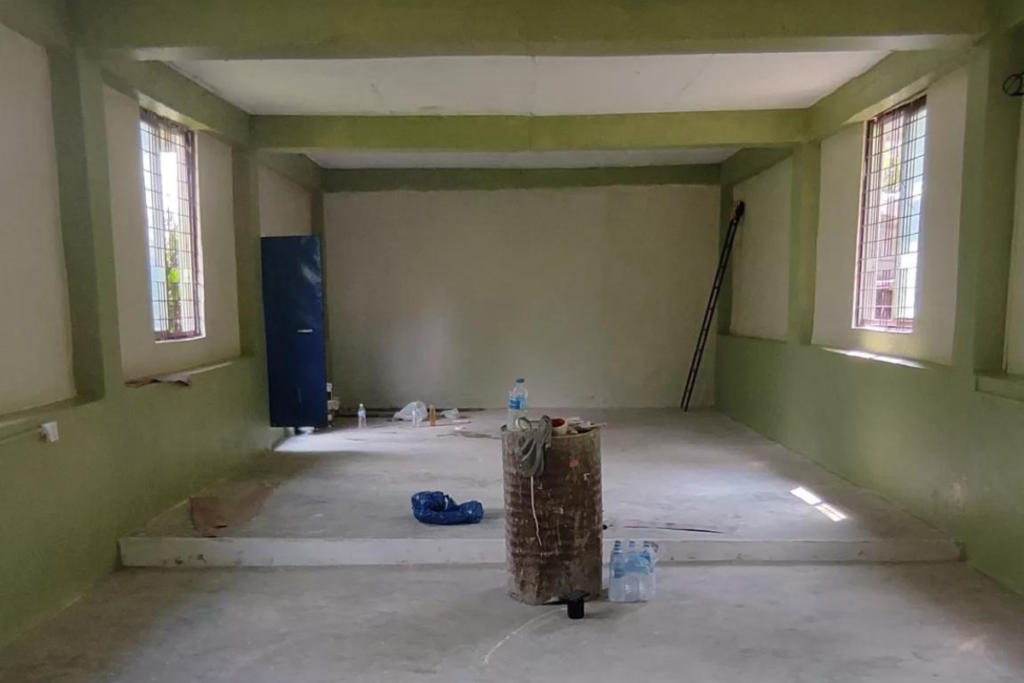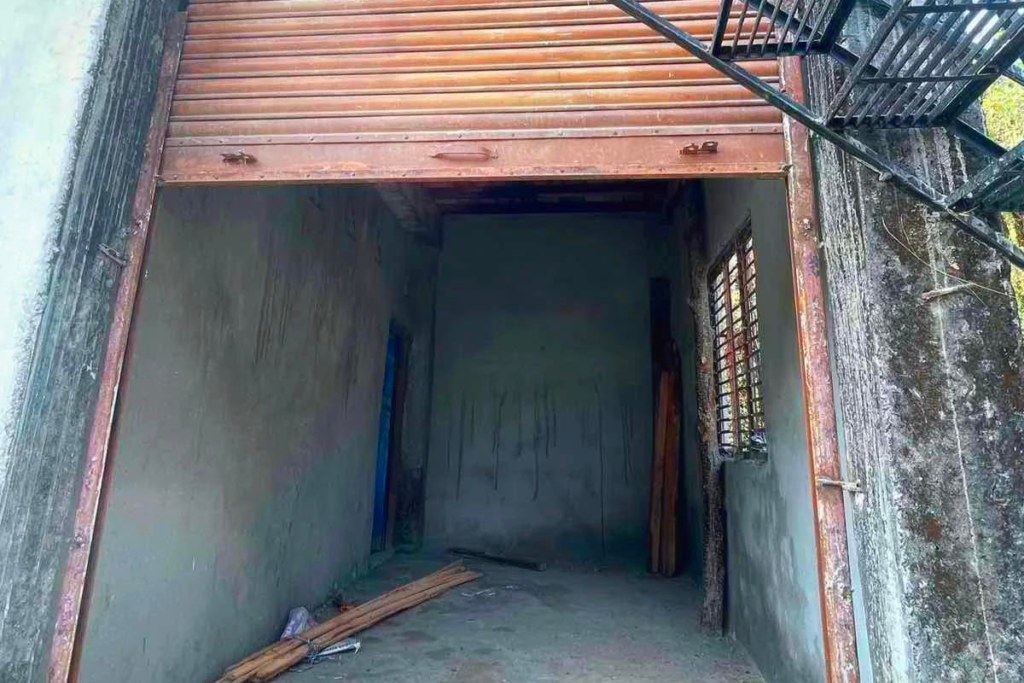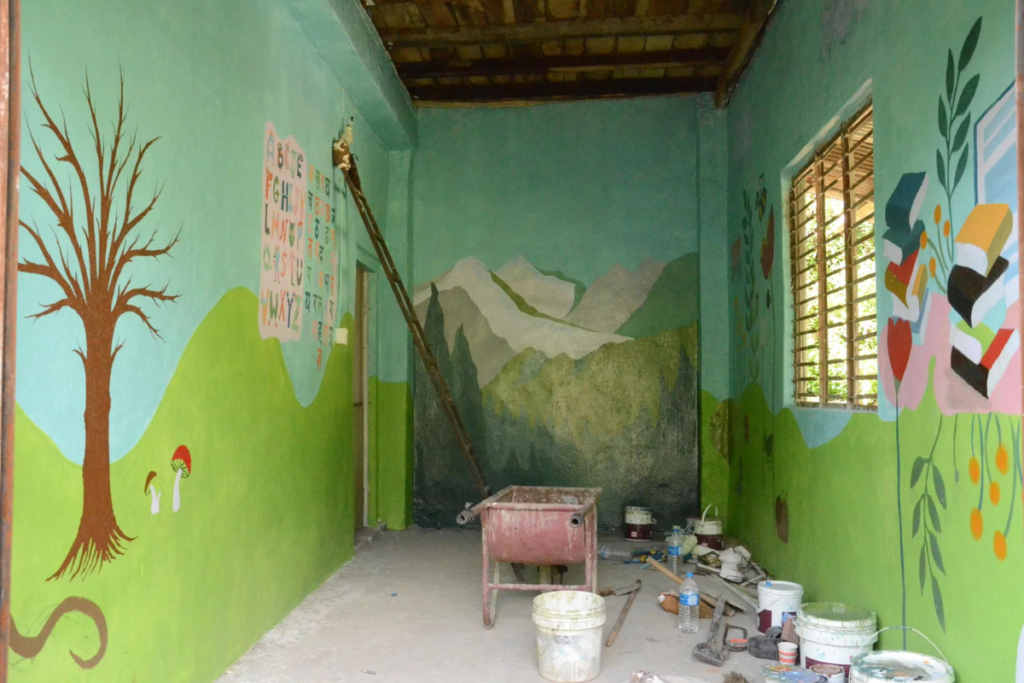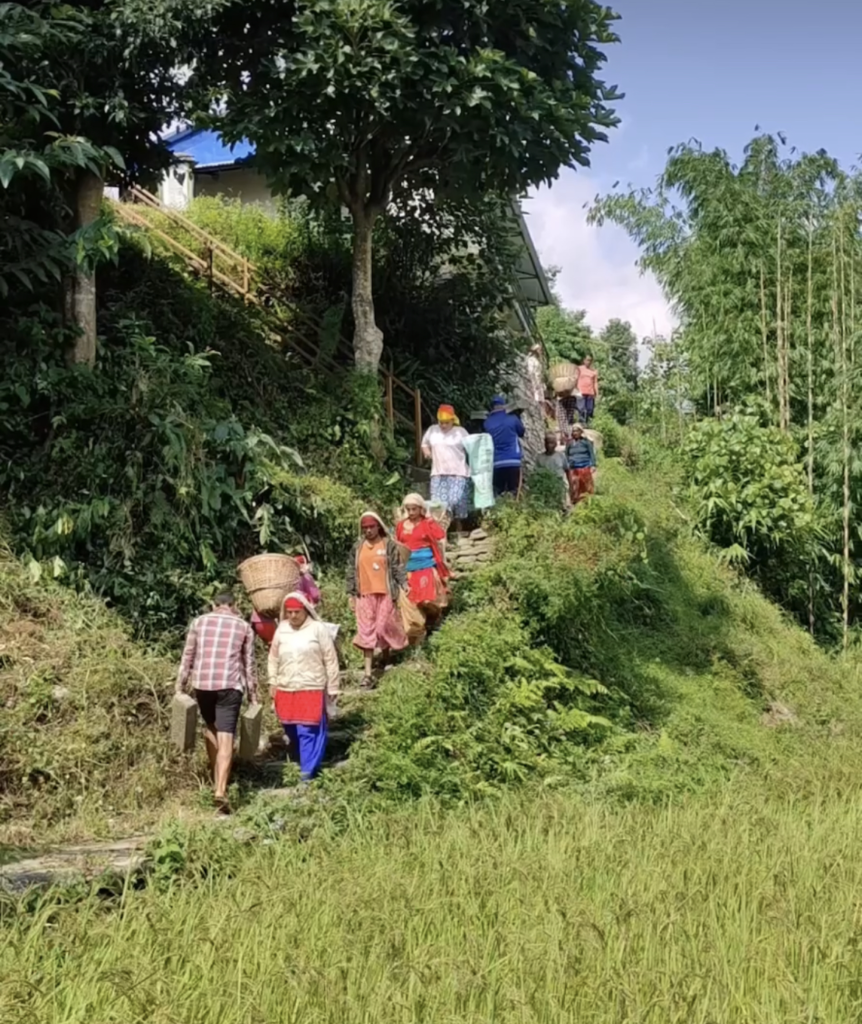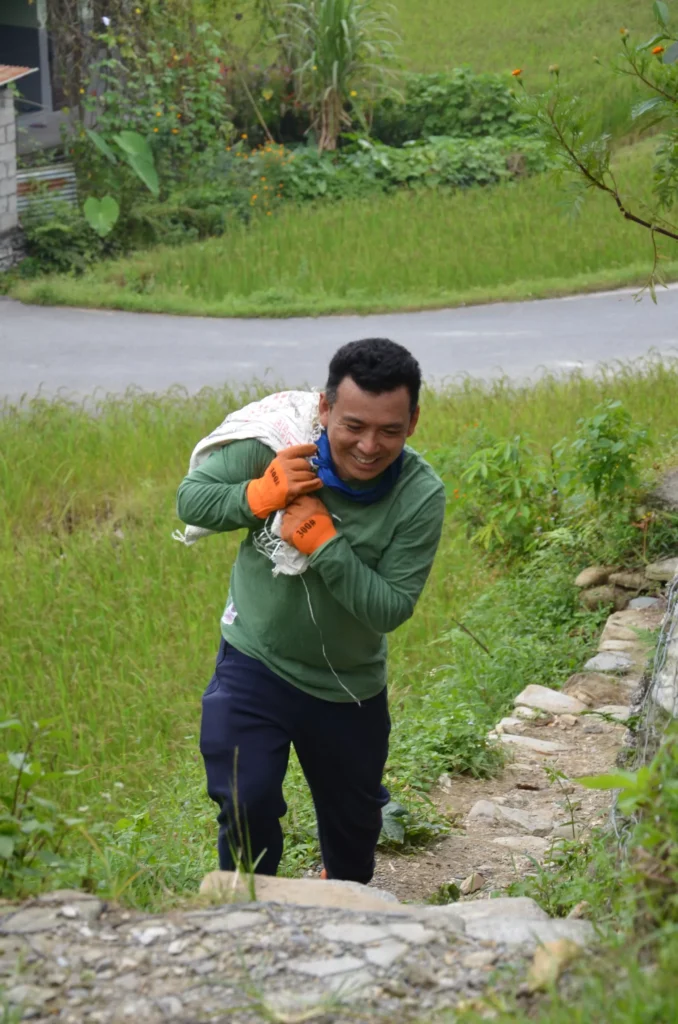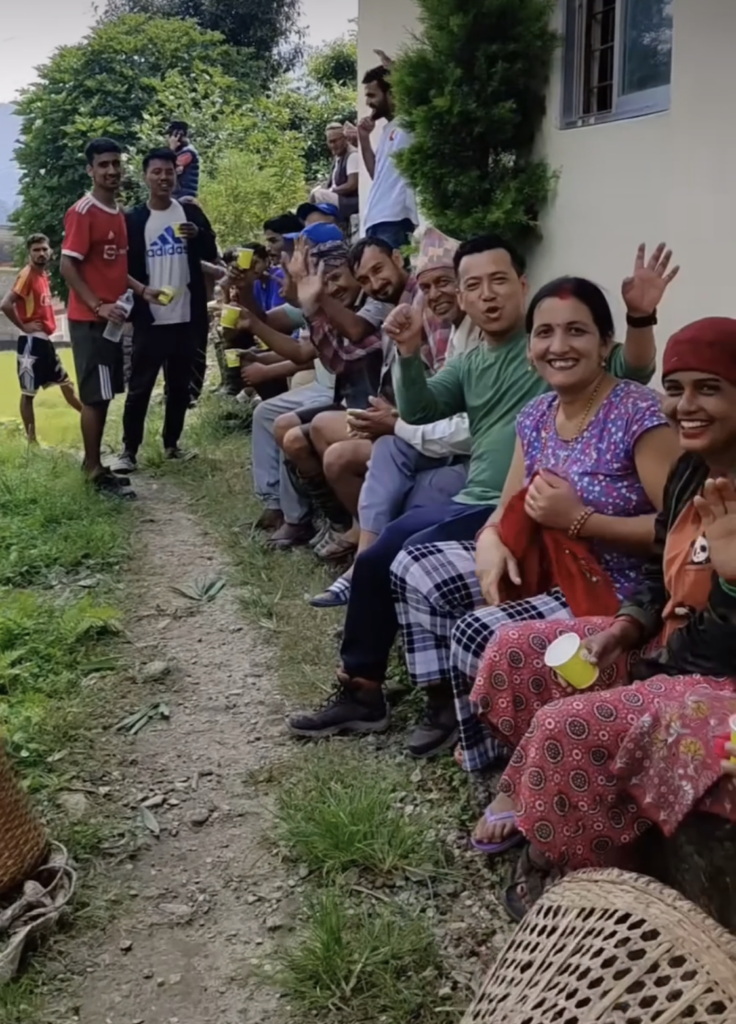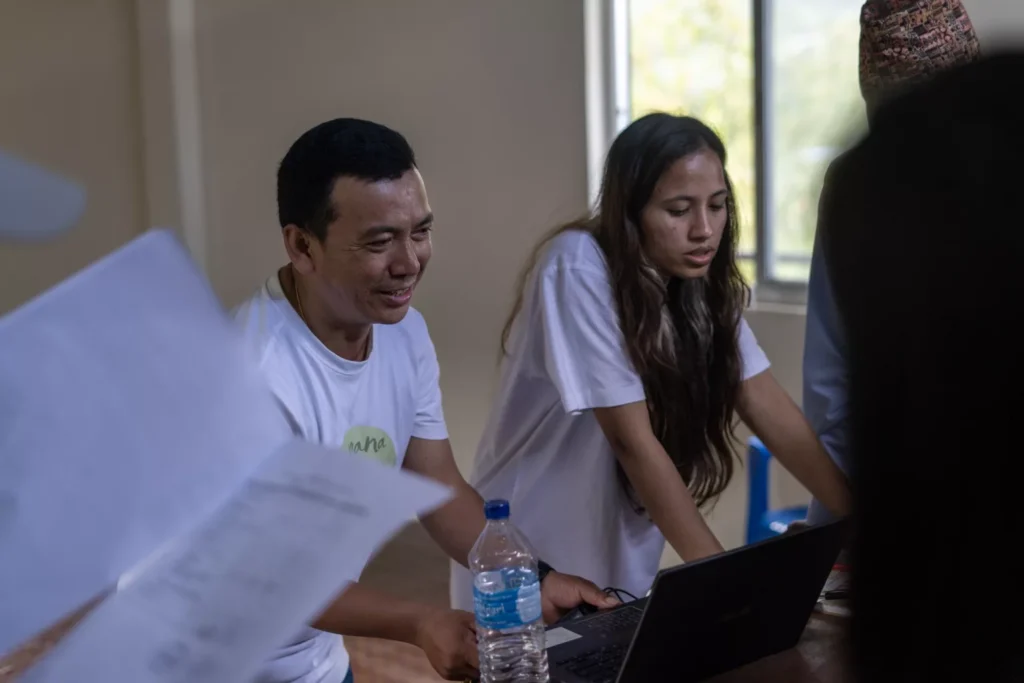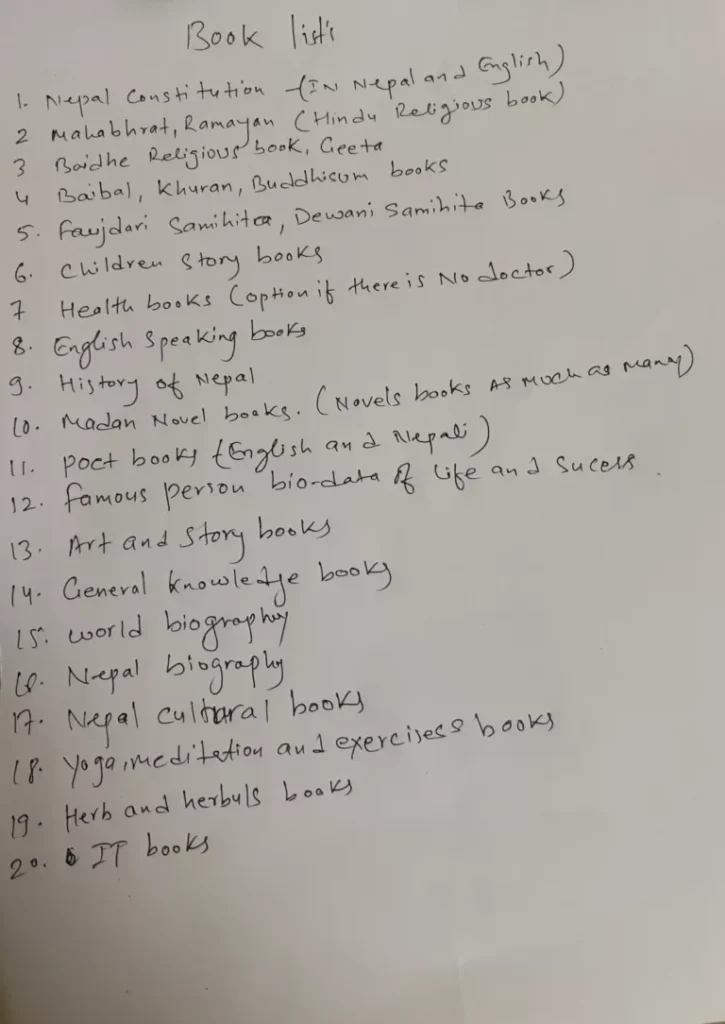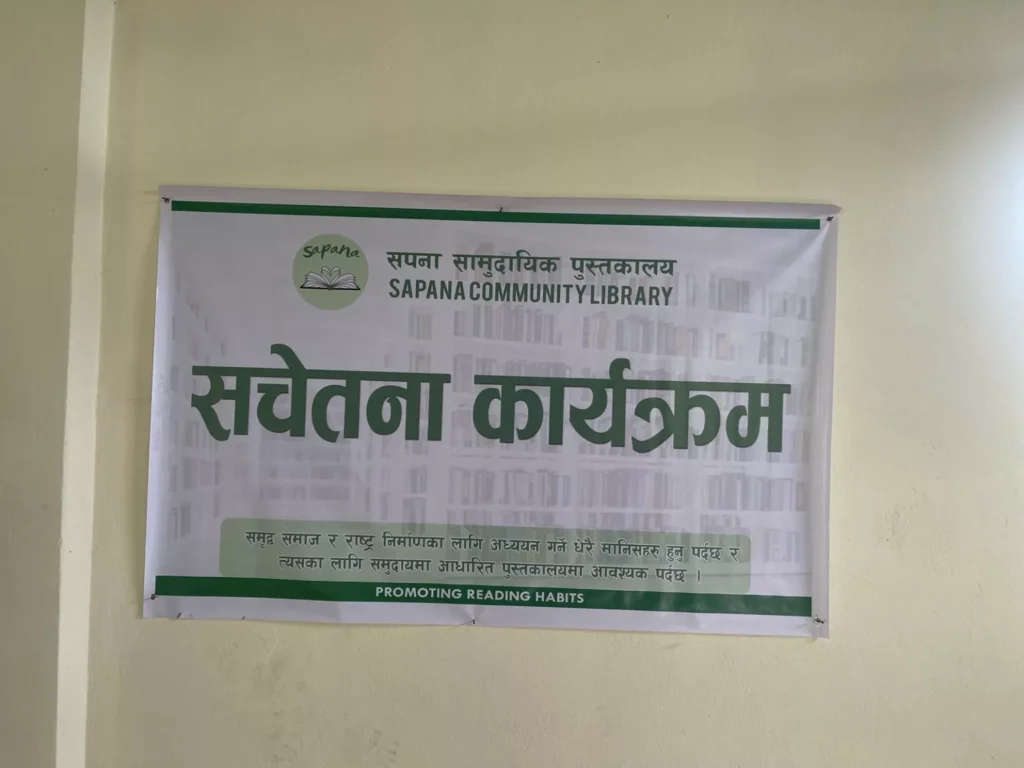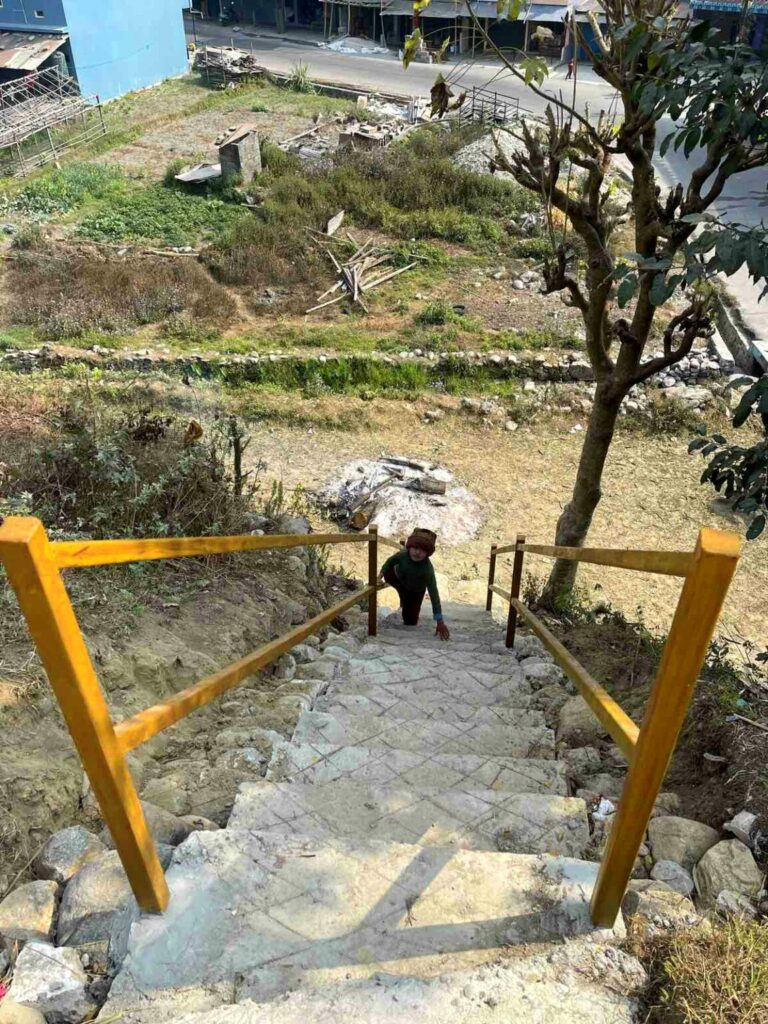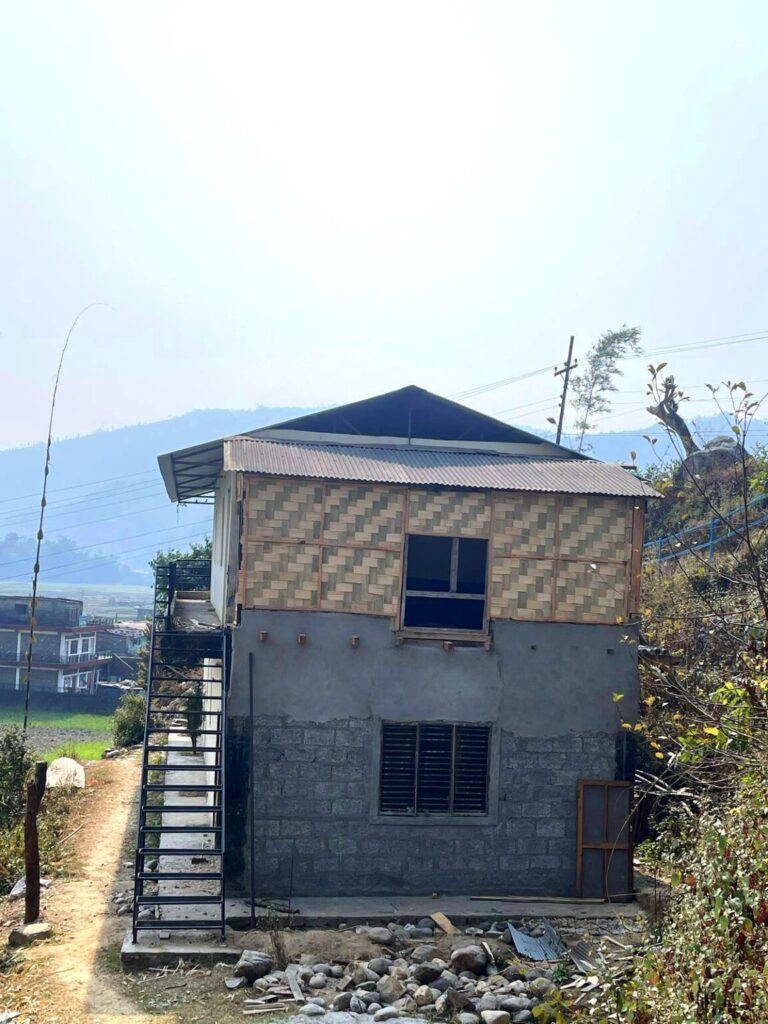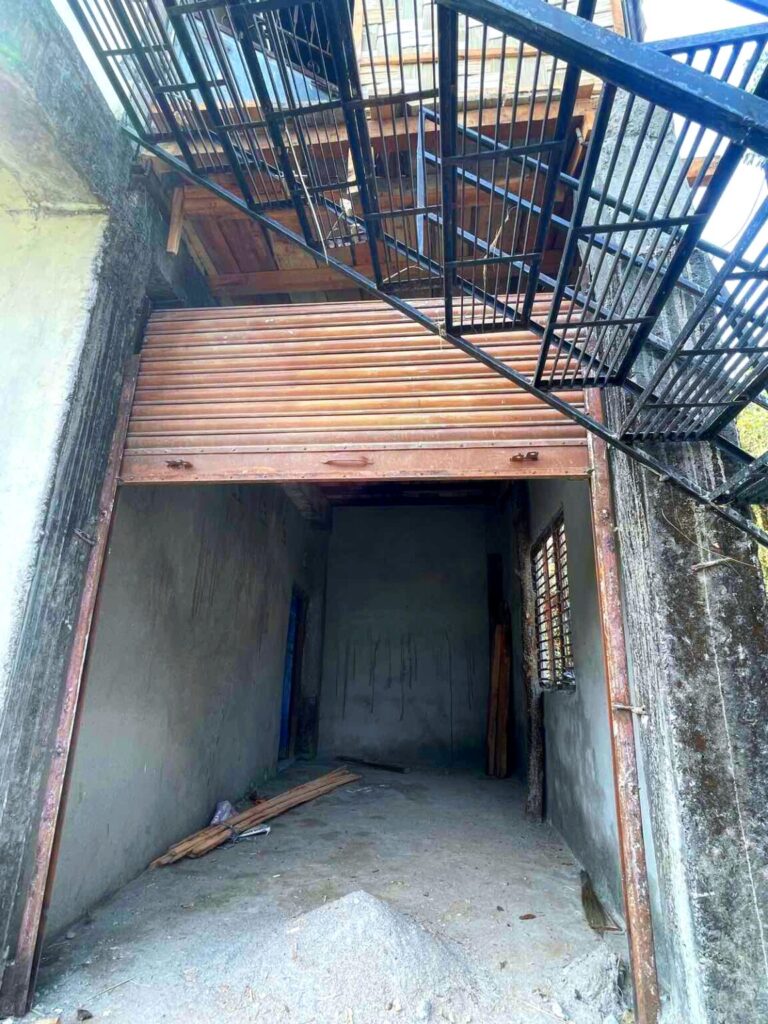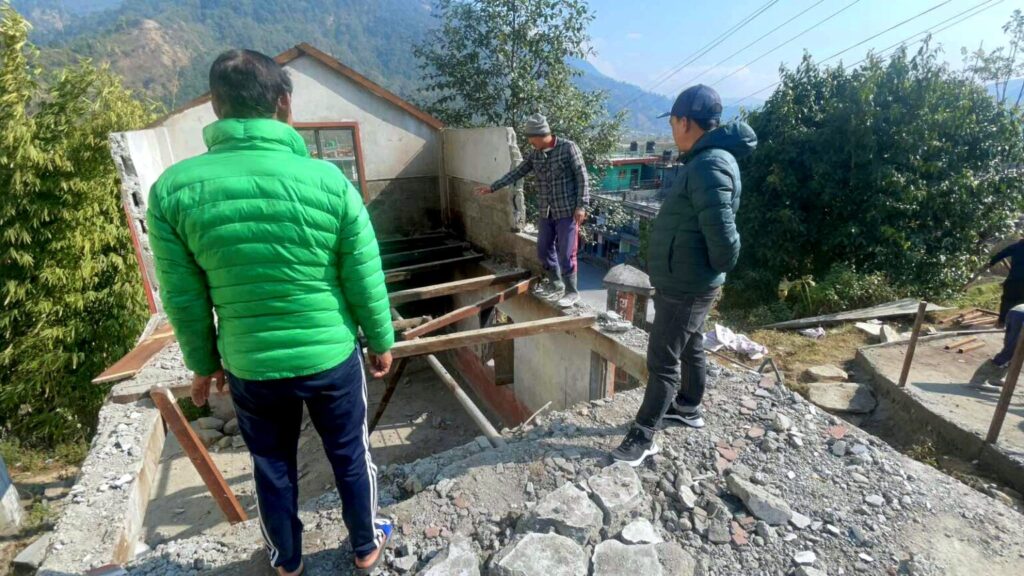The library’s current splendor: A glimpse of its diversity and dynamism
We must truly say, the library has become even more beautiful than we imagined. Honestly, it wasn’t an easy task for us Swiss people, who like to organize things in a structured manner, to make progress in Nepal. Sometimes we heard the advice, “Relax, relax, it will work out. Here things work differently.” But they were right, and the effort has definitely paid off.
The library today
Inside the library, there are a whopping 1,400 books. Approximately 1,000 of them are in English, and 400 are in Nepali. Particularly, the Nepali books are popular, so this collection is constantly expanding, and book requests are considered. Our team member Jasmina took on the challenging task of categorizing all 1,400 books, which sometimes proved not to be so simple. Late into the evenings, we individually stamped the books, affixed them with the corresponding category labels, and arranged them.

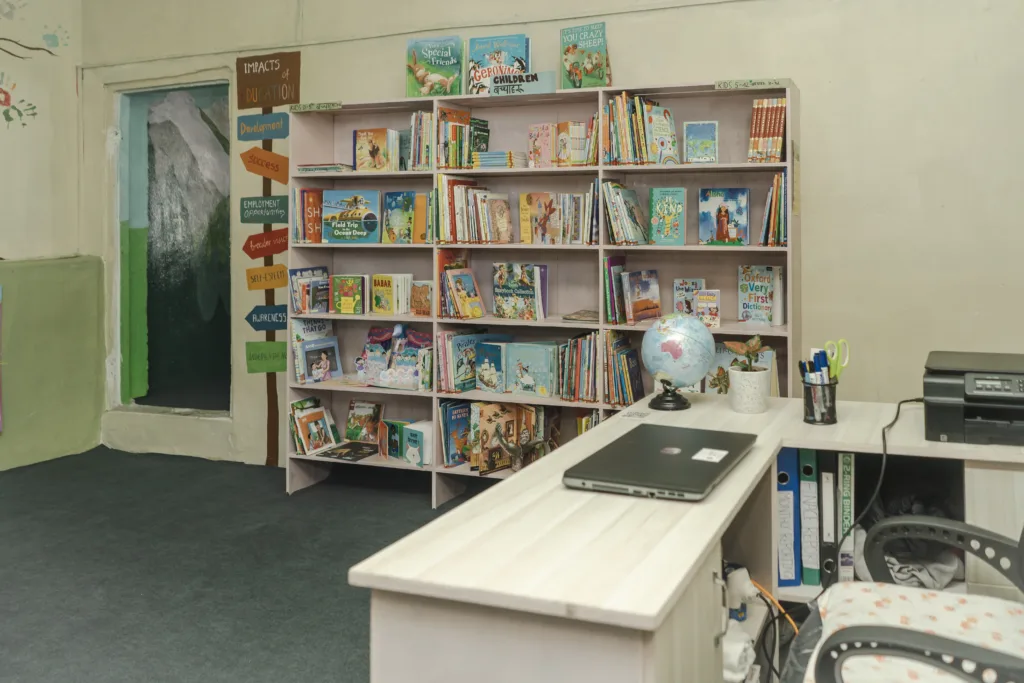
We observed that existing Nepali libraries often go unvisited because nobody really knows what books are available and where to find them. We wanted to do things differently! The categories range is very diverse and goes from agriculture, guides, children’s and youth books, novels, biographies, health, religion, general knowledge to natural sciences such as chemistry, mathematics, English, physics, and nature, as well as community development.
Additionally, the library is equipped with a color printer, Wi-Fi, two toilets, and 10 laptops. To ensure the smooth operation of the library, regular exciting events, expansion of the book collection, and proper maintenance, we have hired three librarians. They will be introduced in more detail in a separate blog post.
Amazing transformations: Before-After pictures that inspire
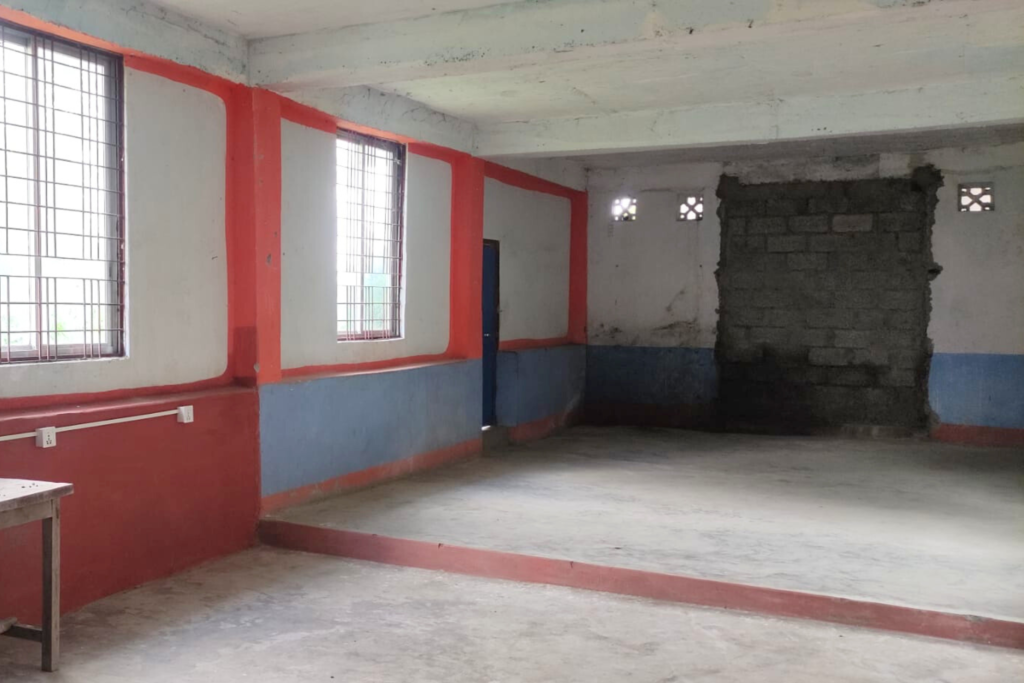





Joyful activities in the children’s area
Not only us but also the children of the village particularly enjoy the children’s area. Many of them even diligently helped with painting. Together with various artistically talented volunteers, we painted the walls with many cute figures; from ladybugs to butterflies, ants, snails, spiders, and snakes, the little creatures on the walls abound. Painting the walls was a multi-day process, accompanied by good music, although not always good singing. At the same time, we sawed, sanded, and painted small wall bookshelves.
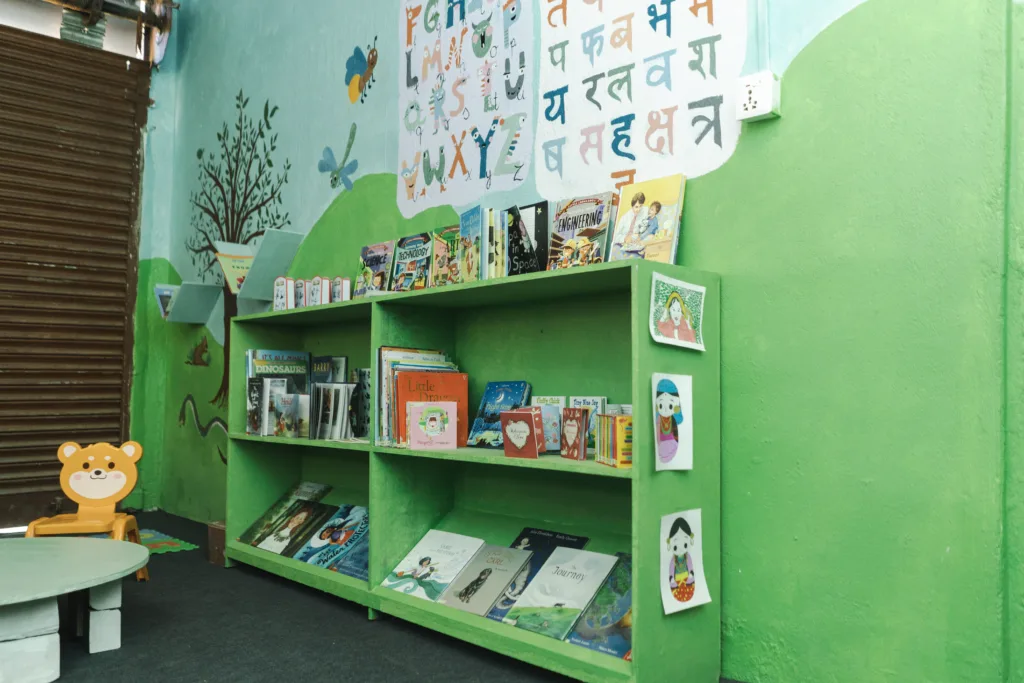

The toys, from puzzles to Uno to plush toys, were mostly donated here in Switzerland and transported to Nepal along with the books.
As soon as school is out at 4 p.m., the children flock to the library, eagerly securing a spot in the children’s area. It’s a wonderful sight; some eagerly solve a puzzle, others write their names on a board, while in another corner, children’s books are being looked at, and there’s cheerful chatter. After a few days, however, we had to divide the children into groups to keep track, as it got quite loud and chaotic.
We are delighted that even after these three months, the library has remained the first stop for children after school, where sometimes homework is diligently done before playing or reading.
Before-After: Children’s area makeover unveiled


What we couldn’t implement
Originally, a computer area was also planned, which was to be equipped with the ten laptops. Since the designated area was being used by another organization for computer courses during our stay, we couldn’t implement this plan yet. The courses have now ended, and the space behind the bookshelves is currently being used as a workshop area. In the meantime, the laptops can still be used until we officially open the computer room.
Since people aged 40-50 in the village of Khoramukh and surrounding areas cannot read or write, we wanted to create a small audio area for their integration. However, since surveys among the respective residents showed little interest in this, we left it as it is.
The next steps
To further promote visitor numbers, book lending and reading habits, the library committee is working together with schools to establish reading clubs. The goal is for schools to visit the library at least once a week during school hours and be motivated to read.
Monthly, exciting, free workshops for residents continue to take place in the library. More on this soon.






